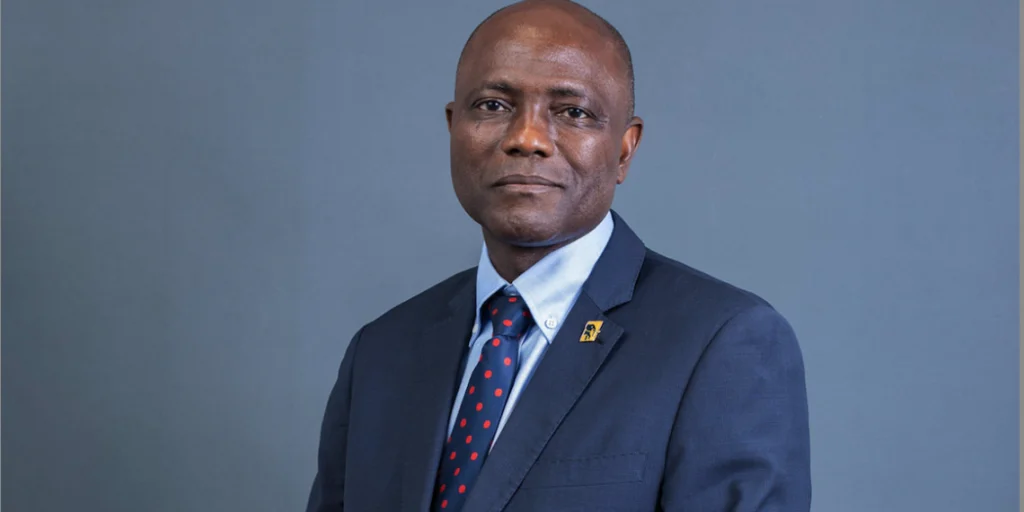FBNH 2023 FY :BIG BUT ‘BRAINLESS’ BANK .

In the financial year 2023 , converting every N100 made at the top line to a meager N19.40k at the bottom line is a dark spot that confirms FBNH is yet to vacate its laggard status.
To the naive or an unsuspecting investor or observer, the 2023 financial year results of First Bank Nigeria Holdings ,FBNH., are nothing but fantastic and phenomenal. This belief may be anchored on the supersonic growth recorded in some of its financial indicators at the end of that year relative to the previous year.For instance,its Gross earnings which grew from N815.2b to N1,595.3b by 95.7% ,Profit Before Tax from ₦’157.7billion to N358.9b by 127.3% y-o-y , cost to income down to 49.%1 from 61.7% and profit after tax that grew to N309.89b from ₦136.17b, by 127.6% are all inspiring.
Also , its NPL ratio fell below 5% at 4.7% ; its total assets grew from ₦10.578trn to N16.938 trn , up by 60.1% ; Loans and Advances from ₦3,78trn to N6,359trn , up by 67.8%; operating Income from ₦600.3 to N1,149.8, up by 91.5% ; Net-Interest Income ₦’363.2 to₦548.9 by 51.1%. and Non-Interest Income grew from ₦237.2 to ₦601.7 , up by 153.6% .All these are enough to boost that belief.
The management of the bank itself was equally effusive about the performance . To it , while the growth in its gross earnings was underpinned by strong business fundamentals; the decline in its cost to income,according to the bank, demonstrated the successful implementation of its cost containment strategies . These are some of its explanations on the results.
But while the above declarations may be true, for the smart investors targeting better and competitive value for money, FBNH only delivered miserable results in that financial year 2023.
Their reason may not be far to seek . Its boasting management could only converted every N100 made at the top line to N19.40k.More precisely, it achieved 19.4% as its net profit margin . That is what it means when its total revenue of N1.595trn is analyzed relative to its net profit of N309.89b
To see FBNH’s disgusting performance clearer just compare it with GTCO , another Tier 1 bank ,with a total revenue of N1.187trn . N540b profit after tax was realised from a very much lower total revenue .That profit profit nearly double that miserable profit delivered by FBNH from a very much bigger revenue . Ironically , this has become its tradition unnoticed by some careless investors of FBNH . Moreover, total assets of GTCO is almost half of FBNH’s .This is nothing but outrageous on the part of FBNH. What is the magic ? GTCO does not only possess a labor productivity advantage, its overhead costs has also been less as a percentage of total costs, than those of its rivals .In fact , FBNH is the worst among the tier 1 banks
The picture of FBNH becomes gloomer where it is compared its rrivals or best in class . That is why unlike the naive ones , smart investors look beyond bench marking the performance of an organization in relation to previous years in order to identify any significant changes to form their opinions on the health of any organization. They know the danger in it : it could lead to complacency on the part of the management. Moreover, it is the rate of improvement compared with that of competitors that is important. They know some valuable insights about performance standards could be gleaned by looking at the comparative perspective of other organisations in the same industry or sector .
This observation is true .When FBNH is compared with its rivals and the best in class in the industry, the picture is more annoying. ; when its performance is juxtaposed with its rivals particularly among Tier 1 banks FBNH remains the least efficient bank . Its performance becomes more miserable when it is compared with the best in class in the industry.Asides its asset side advantage over GTCO, nothing else is special about it .
In the 2023 financial year, the banking industry players saw gross earnings and profitability climb to a record high, benefitting from MPR hikes and Naira devaluation.
All of these banks exploited these opportunities to make huge money ,including UBA and Acess Bank except First Bank with huge loss of N350 billion in its currency revaluation .Benefiting from the above opportunities, Access Holding had the highest gross earnings at N2.59trn, and GTCO had the lowest at N1.19trn, but Zenith Bank took the lead in terms of profit at N795.96bn, ahead of UBA (N757.68bn) and Access Holding (N729.00bn).
,Zenith Bank is holding tightly to its profitability laurel, the most profitable bank with largest profit for years ; GTCO remains the most cost-efficient while Access Holding is biggest by asset and deposit. First Bank is nowhere to be found in the league of Tier 1 bank ; it is just a big but brainless entity.
The banks’ high earnings made the earnings per share grow to a double-digit, with Zenith Bank taking the lead at N21.55k while First Bank Holding had the lowest at N8.59k. This implies that First Bank Holding incurred high operating costs, eating deep into the profit compared to Zenith Bank. Access Holding retained its position as the highest customer depositor at N15.32trn ahead of UBA and Zenith, while FBNH had N10,87 trn
Similarly, the banks’ financial ratios had a positive outcome in 2023 , with GTCO having the highest net interest margin, return on equity, and return on assets. Also, GTCO was the most cost-efficient, with the lowest cost-to-income ratio of 29.10%, while First Bank Holding was the least efficient at 49%.
GTCO fundamental valuation of price-to-book value and price-to-earnings at 0.96x and 2.31x, were the best while First Bank holding had the least at 0.44x and 1.78x, respectively. This implies that GTCO’s market value reflected its underlying book value and earnings more than FBNH .
Despite the high-interest rate environment, GTCO had a 1.80% cost of funds, which was extremely lower than that of FBNH at 3.7%, the worst among its peers . GTCO seems to have better financial health than others based on the financial ratios despite having the lowest gross earnings, profit, and asset size.
Investors could be exused for having failed to anticipate the success of the above challengers but what about the industry incumbents like FBNH .What exuse does it have for being unpleasantly surprised by the more vital and aggressive younger banks? The problem is that some incumbents tend to dismiss competitors with meager resource endowments to the extent that challengers even register on the radar screens of leaders as small blips .
Only a brainless organisation displays this trait . Or what else could have been responsible for this uninspiring performance or what exuse does it have ? Tier 1 banks are not created for fun. They are expected to have strong reputations, technological riches, and deep pockets relative to other tiers of banks . With these resources at their disposal ,they could hire the most talented people in their industry, they have potential for sizable market shares, and, in most cases, could have a worldwide distribution presence.
Pro big analysts believe they have a capacity to match the resources and global distribution of large competitors that brings advantages .First , large companies tend to devote a disproportionate share of their resources to training and education and their potentials open the door to many of tomorrow’s mega-opportunities .
But the problem with FBNH is not resource handicap . In its battle for leadership, its much more real and much more substantial enemies range from lethargy, convention, myopia, to elitism . The bank miserable performance has confirmed that bigness without stretch and leverage is obesity just as smallness without stretch and leverage is impotence .
One conclusion to be drawn from the endless shifting of competitive fortunes from FBNH to the younger banks is that the starting resource positions are a very poor predictor of future industry leadership. A firm can sit atop mountains of cash and command legions of talented people, and still lose its preeminent position. Likewise, a firm can sometimes overcome enormous resource handicaps and successfully scale the heights of industry leadership. Getting to the future first is more a function of resourcefulness than resources.
The new CEO of FBN has many things to learn from his rivals to make the difference from his predecessors and regain the bank’s industry leadership for his bank.The Bank needs a better brain .But the brain is not the brain of the CEO .Instead , it is the amalgamation of the collective intelligence and imagination of its managers and employees throughout the company who must possess an enlarged view of what it means to be strategic.

This will help the bank regain access to the leadership position by reinventing the future or by changing the rules of the game to get disproportionate portion of the market and profit.
In the past ,FBNH instead of achieving this had suffered dangerous casualties ; it crashed into the future as its top management was asleep at the switch, a situation that gave its few younger rivals to overtake it and snatch the industry leadership from it .It would have been long forgotten if not for the regulatory authorities that rescued it.
To reinvent the industry, this bank needs a leader with a better power of foresight than its past leaders .This is imperative for many reasons .It will help it to gain deep and new insight into trends in lifestyles, technology, demographics, and geopolitics .
The power of industry foresight essentially helps to establish one’s company as the intellectual leader in terms of influence over the direction and shape of industry transformation.;it helps managers answer three critical questions regarding what new types of customer benefit it should seek to provide in the future , what new competencies it will need to build or acquire to offer those benefits to customers and how it will need to reconfigure the customer interface over the next several year.
However ,foresight isn’t enough, a leader must avoid executional blunders.. Industry foresight doesn’t guarantee competitive success. The most foresightful firms aren’t always the most profitable. Gather all the foresight in the world, if not matched by a capacity to execute, it counts for little.On the other hand, terrific executional ability, in the absence of industry foresight, is not enough to guarantee future success. In other words, creating industry foresight and achieving operational excellence are equally challenging tasks.
The point is that the future must not only be imagined with the power of foresight, it must be built. For this , it needs a new strategic architecture that represents the map of the future .
No doubt about it , First Bank needs an architect as it leader who must be capable of producing a blueprint for how to turn the dream or foresight into reality , not only maintenance engineers who had been controlling its destiny. ; it needs an architect driven by high powered strategic intent because building a strategic architecture may point the way to the future, it’s an ambitious and compelling strategic intent that provides the emotional and intellectual energy for the journey.
This is more so because resourcefulness stems not from an elegantly structured strategic architecture, but from a deeply felt sense of purpose, a broadly shared dream, a truly seductive view of tomorrow’s opportunity or strategic intent .
First Bank needs a leader with stretch and the creativity it engenders that are the engine and fuel for corporate growth and vitality. For this ,the bank’s strategy process must be a purposefully created misfit between where the firm is and where it wants to be.
This is the initiative that delivered the industry leadership to some younger generation banks while leadership of FBNH was asleep at the switch. The leadership of these younger banks knew their current capabilities and resources were manifestly insufficient to the task , avoided the traditional view of strategy that focuses on the “fit” between existing resources and emerging opportunities and went for strategic intent which creates, by design, a substantial “misfit” between resources and aspirations . They knew where fit is achieved by simply paring down ambitions, there would no spur for such ingenuity and much of the firm’s strategic potential would remain dormant..
They did not only create such misfits between their resources and aspirations they ultimately, one closed the gap between resources and aspirations that strategic intent opened up . They closed this gap by leveraging resources, by traveling the maximum distance down the road to leadership, using the least possible amount of fuel.
However , unlike its smarter rivals ,FBNH’s way to close this gap is by downsizing or restructuring as well core process redesign or reengineering. .These were the only options and the price to be paid for its inability to imagine and create the future ahead of its rivals was the loss of the industry leadership. Sequel to this its organizational ,strategic and competitivec paradigms are now believed to be obsolete by some analysts relative its smarter rivals.
The reason for this may not be far to seek. Despite the fact that voices calling for a new organizational paradigm of leaner ,flatter , virtual, modular etc have been numerous and vocal, this bank organisational paradigm is believed by some analysts to be out of date and toxic as it remains highly bureacratic .
Although bureaucrcraticacy and its control over capital spending, financial rewards, planning, procedural guidelines, and organizational design is supposed to prevent people from turning left and turning right and supposed to be a system of checks and balances that prevents individuals from pursuing idiosyncratic and competing objectiv e, without a point of view provided by strategic intent about corporate direction, bureaucracy is likely to be little more than an enforcer of corporate orthodoxies .
Bureaucracy blocks initiative and creativity at every turn. Bureaucracy constrains the range of available tactics, but generally leaves open the question of ultimate goals. Hence, in many companies it is the means that are constrained rather than the ends.These are the issues drawing FBNH backward . .




